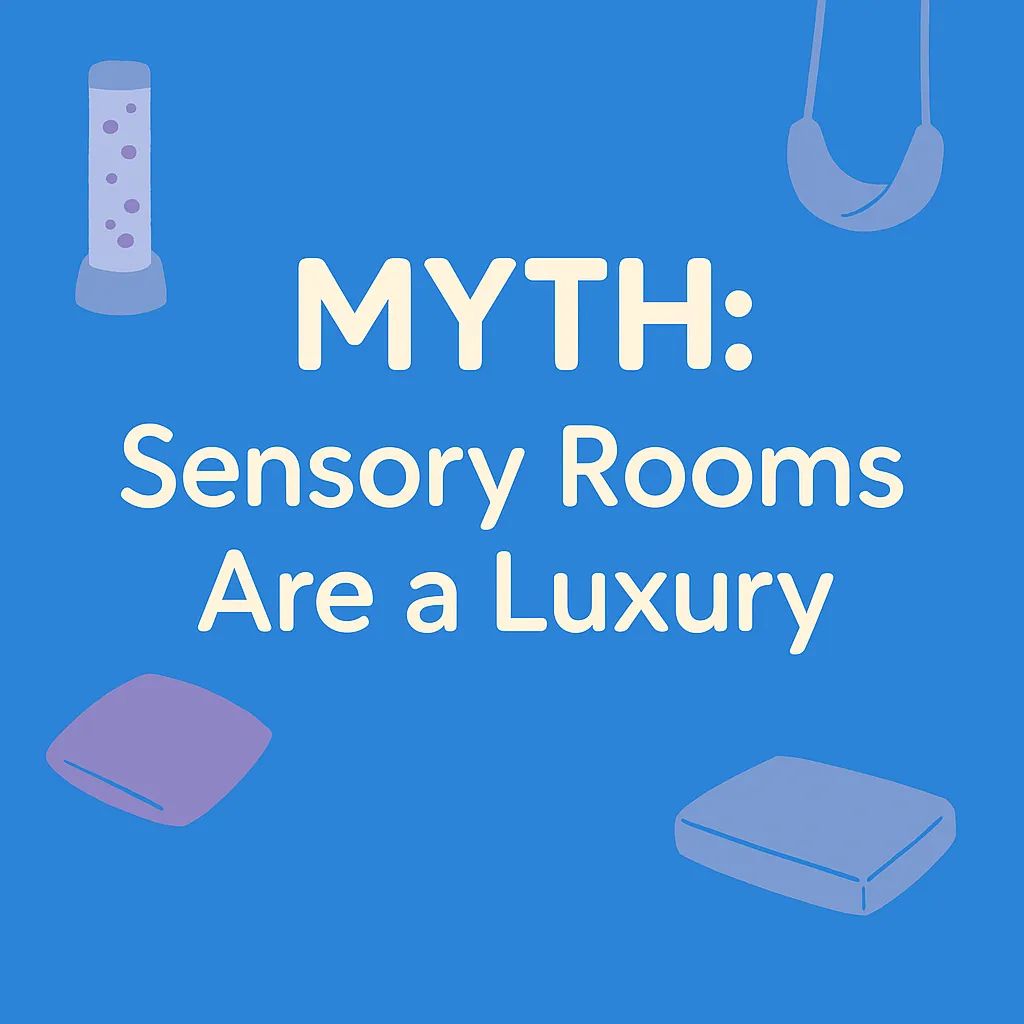
Regulation Isn’t Extra
🧠 Regulation Isn’t Extra — It’s Essential
Why Sensory Rooms Are Not a Luxury
For too long, sensory rooms have been labelled as a "nice-to-have." A soft add-on. Something schools might invest in if there's extra funding, or if a particular child needs it.
But here's the truth:
❌ Myth: Sensory rooms are a luxury.
✅ Truth: For many children, they're the difference between meltdown and meaningful learning.
And not just for children — for the whole nervous system ecosystem that makes up a school.
🌱 Why Regulation Needs to Be Built In, Not Bolted On
Every child brings a nervous system to school — not just those with formal diagnoses. Some arrive dysregulated from the moment they walk in. Others shut down in the middle of a noisy lesson. And some mask their distress until they explode in the corridor, the bathroom, or the car ride home.
A well-designed sensory room interrupts that cycle — not by punishment or escape, but through regulated access to calm, safety, and reset.
It doesn’t replace the classroom. It prepares children to re-enter it.
💡 Who Benefits from a Sensory Room?
It’s not just for autistic students.
Sensory rooms support:
Children with ADHD, who need movement to focus
Students with anxiety, who need space to breathe
Children from trauma backgrounds, who need emotional safety
Teens experiencing burnout from sensory overwhelm
Teachers and SNAs, who also need to co-regulate
A principal we worked with put it best:
“We thought it would be for two or three children. It turns out everyone uses the room.”
Explore how we design for inclusion → Sensory Rooms
🛠 What Makes a Sensory Room Essential?
At Sensory Sphere, we don’t design rooms that just look nice — we design rooms that work.
Features that transform a sensory room from a luxury into a learning tool:
💡 Zoned layouts for calming, movement, and tactile input
🧸 Weighted blankets, fidget kits, and fibre optics for sensory modulation
🌈 Brand palette integration for calm, clarity, and comfort:
Blue (#4a90e2) – grounding and trust
Green (#50c878) – emotional support
Purple (#b19cd9) – safety and sensitivity
Yellow (#ffd700) – energy and optimism
Grey (#d3d3d3) – calm and neutral control
🧠 Staff training on when and how to use the room effectively
We believe design should respond to the nervous system, not just the behaviour.
📣 Why It’s Not a Luxury — Especially Now
Post-pandemic, schools are navigating rising emotional dysregulation, reduced attention spans, and increased mental health needs.
The demand isn’t going away. The need isn’t niche.
And the solution isn't reactive — it’s proactive regulation.
Let’s stop treating sensory support as something extra.
It’s part of the foundation.
✅ Ready to Create a Room That Changes Outcomes?
From initial consult to full install, we guide schools and clinics across Ireland in creating high-impact sensory rooms that work within space, time, and budget limits — without compromising on quality or care.
📩 Start here → Book a Free Consultation
📷 Or explore our approach → Sensory Room Services
✨ Final Thought
A quiet room isn’t a privilege.
It’s a place of permission — to feel, to pause, to begin again.